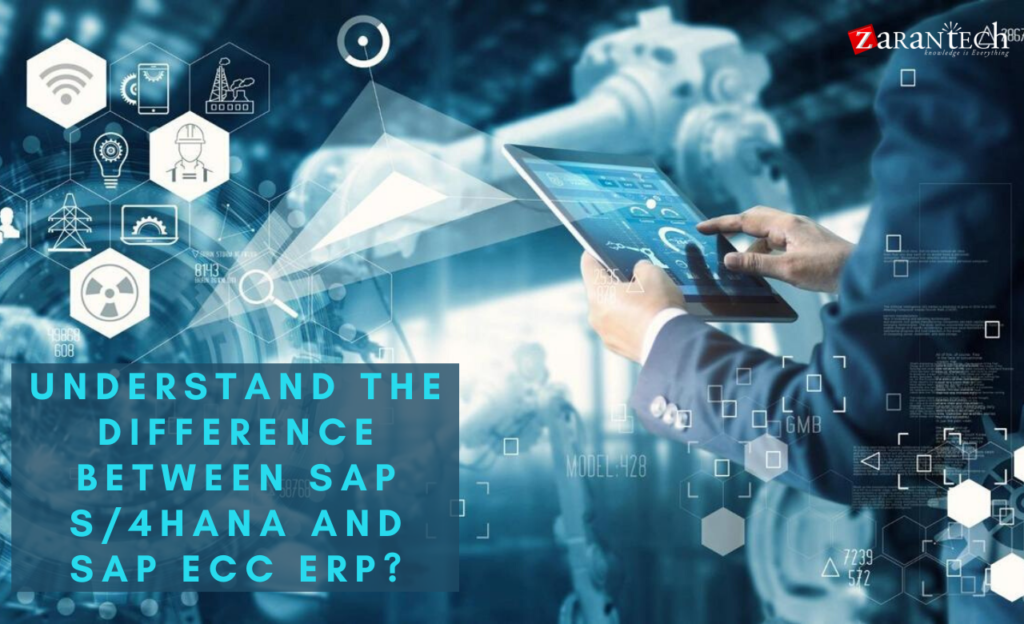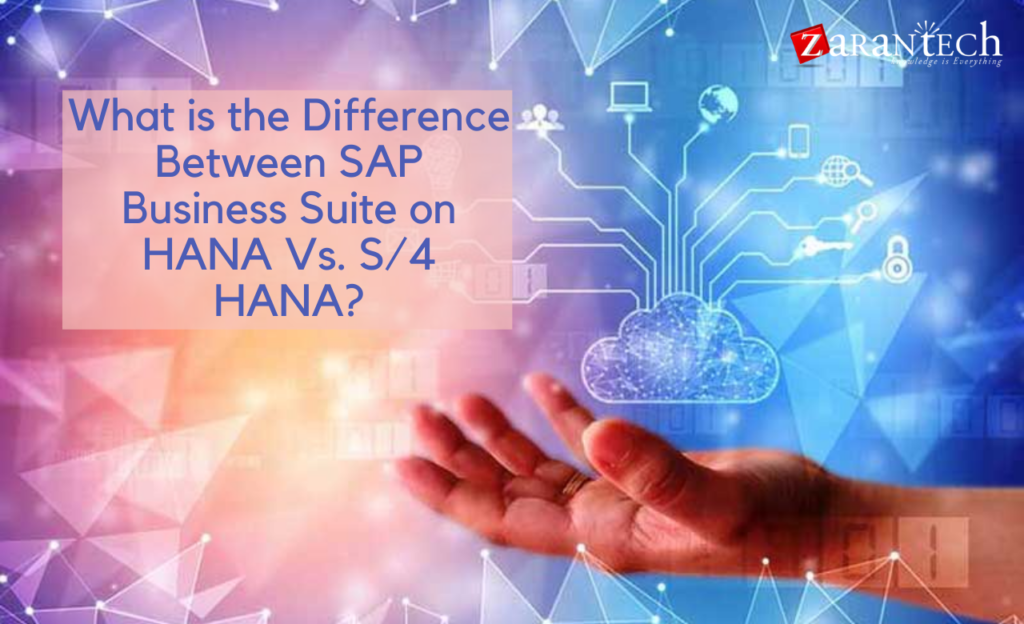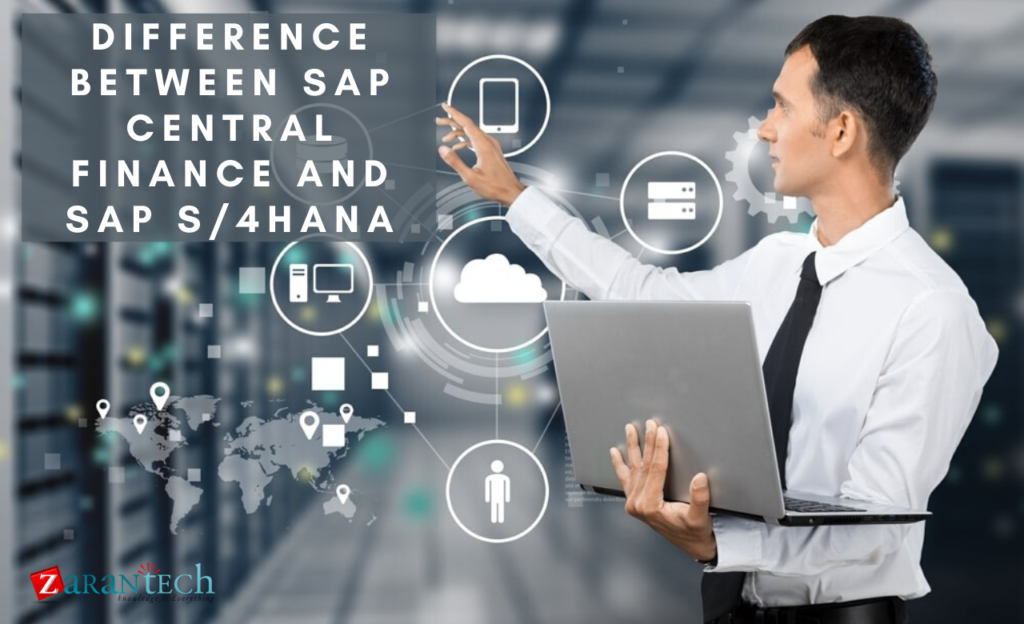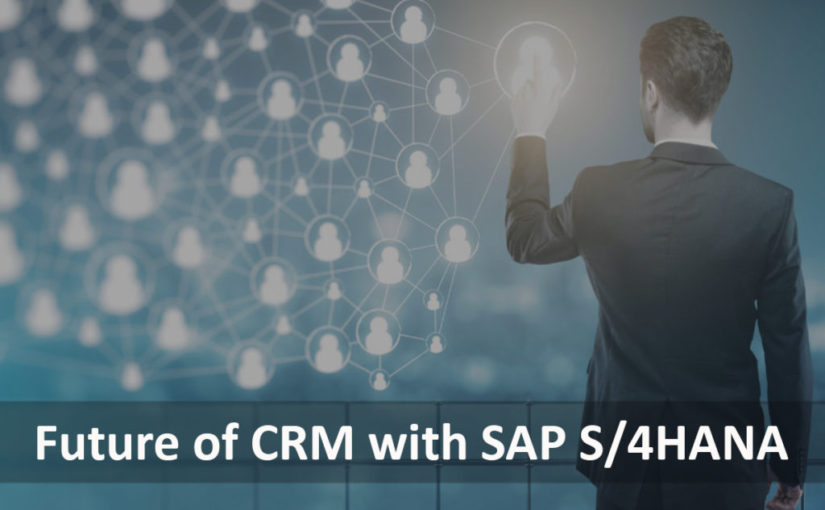Understand the Difference Between SAP S/4HANA and SAP ECC ERP?
Category: SAP S/4HANA Posted:May 14, 2020 By: Alvera Anto
SAP presented SAP S/4HANA in 2015. Since then, most of us are complying with the technologies & simplifications in SAP S/4HANA. We also wonder about the functionalities & business advantages of SAP S/4HANA. However, now, the question arises, what is the difference between SAP ECC and SAP S/4HANA.
In this post, I will cover a few of the key differences between SAP S/4 HANA and SAP ECC Therefore, by the end of the article, you will have a brief summary of the SAP ECC SAP S/4HANA distinction.
The distinction between SAP S/4HANA and SAP ECC
Database Element of SAP S/4HANA and SAP ECC.
SAP S/4HANA can run just on the HANA database. This is completely different from SAP ECC. SAP ECC can work on Oracle, IBM DB2, etc. SAP S/4HANA leverages SAP HANA’s in-memory abilities as well as design concepts.
- The HANA in-memory database reads data faster than traditional databases that fetch data from the hard disk. This is because data is read from memory, i.e., data lives in the main memory RAM (though Write takes place in hard disk).
- HANA’s column-based tables allow faster access to (because only affected columns require to be checked out in a query), better compression (because only distinct values are compared to rows), parallel processing (different columns can be conveniently processed parallel).
- OLTP and OLAP abilities are available in the same system. They offer real-time reporting as well as predictive evaluation.
- There will be no accumulation (overall), index, and history tables in SAP S/4HANA. This is because of dynamic aggregate creations on the fly based on line item tables.
Single Source of Truth as well as SAP S/4HANA Universal Journal
SAP S/4HANA combines data frameworks of various components such as FI, AA, CO, CO-PA as well as ML into a single line item table. This table is ACDOCA, also referred to as the Universal Journal. The visibility of the universal journal eliminates a number of accumulation as well as index tables. Currently, data insertions happen right into a single table rather than several tables. Therefore decreasing the data footprint by a massive margin.
Furthermore, the MATDOC, the new line item for Inventory Management, removes 26+ tables. Material documents are saved in MATDOC but not in MKPF or MSEG tables.
New Functional Capabilities
New functional capabilities are available to work with SAP S/4HANA as well as the HANA in-memory computing. A couple of examples are Central Finance, SAP Cash Management, as well as SAP BPC Optimized for SAP S/4HANA. However, these require additional licenses.
Addition of standalone solutions to SAP S/4HANACore
Some standalone SAP Solutions are currently available as a part of the SAP S/4HANA Core. Two typical instances are SAP Transportation Management and SAP Extended Warehouse management.
Unison of CO and FI
In SAP ECC, we might observe FI GL accounts mapped to CO primary cost elements. However, in SAP S/4HANA, the universal journal utilizes just one area to keep both GL accounts and cost elements. Cost elements (both primary as well as secondary) are now GL accounts. Thus, an appropriate cost element group is used when they are created and maintained (in FS00). Reconciliation (as in case of CO to FI) is not needed now. Therefore, period-end closings will be faster.
Intro of a New GL in SAP S/4HANA
SAP S/4HANA is technically similar to the new GL of SAP ECC. This is because of its Data structure. Consumers utilizing the classic GL need not make use of the document split or the parallel ledger. However, the new GL’s functionality (Parallel ledger) is a prerequisite for a new Asset Accounting.
Account-based CO-PA vs Costing based CO-PA
Account-based CO-PA is currently the default option. The costing based CO-PA is now available as an option. However, both options can also be run simultaneously.
What about the Custom Code?
In SAP S/4HANA, custom code checked out operations redirect to compatibility sights because of a unique setting at the database interface level (i.e invisible to source code). Therefore, custom reports work with no disruptions.
Business Partners and Material Number Extensions
In SAP S/4HANA, Customer and supplier master data require to be integrated/migrated as Business Partner. Customer-vendor integration (CVI) is a mandatory action to run business with SAP S/4HANA.
One key distinction between SAP ECC and SAP S/4HANA is that the Material number can currently be 40 characters instead of the existing 18 in SAP ECC. This is an optional attribute. Consequently, the effects of this extension on interfaces, custom coding, and other SAP applications should be assessed. This needs to be done before changing to 40 characters. You can refer to note number 2267140 for even more details.
New Credit Management System
There is a new Credit Management System in SAP S/4HANA by the name of FSCM-CR. It is the credit management of Financial Supply Chain Management. It replaces SAP ECC’s FI-AR-CR. FSCM-CR is built on a distributed design. This permits interfaces with external Credit Rating Agencies. Traditional SAP ECC’s FI-AR-CR credit control setting needs a high degree of manual work. Furthermore, FSCM-CR has valuable innovative functions like:
- Automatic risk scoring & credit limit calculations with a credit rule engine.
- Automatic upgrade to master data based upon the approval of the credit limit.
- Workflow for credit score events.
SD Data Model Changes
There are adjustments among data models in rates and condition methods. As an example, the new PRCD_ELEMENTS table with expanded fields replaces the existing KONV table. Please refer to note 2267308 for more details.
Live Material Requirement Planning (MRP)
In SAP ECC, MRP runs occur through batch jobs during off-peak hrs. However, there is no requirement of the batch job in SAP S/4HANA. In SAP S/4HANA, MRP runs can happen in real-time by leveraging the power of SAP HANA.
One bottom line of difference between SAP S/4HANA as well as SAP ECC is that while MRP can be just run on the plant and MRP area level, it can not be operated on the storage location level in SAP S/4HANA. In SAP ECC, storage locations can either be left out from MRP or they can be intended independently. For SAP S/4HANA, SAP recommends usage of MRP area with MRP type for circumstances at the storage location level. Additionally, MRP with subcontracting has been simplified in SAP S/4HANA.
Global Trade Services for Foreign Trade
Global Trade Services (GTS) in SAP S/4HANA replaces the foreign trade functionality in SAP ECC. A few of the features in GTS w.r.t Foreign Trades are,
- SPL (Sanctioned party list) testing.
- Automated embargo check. A process that needs manual effort in SAP ECC.
- Automatic & Simplified permit checks in SAP S/4HANA. License checks in SAP ECC were complex and required a lot of manual efforts.
- Automatic import/export declaration.
Material Ledger Mandate
In SAP S/4HANA, activation of the Material Ledger (ML) is mandatory. ML evaluates inventory in multiple currencies. Generally, in SAP ERP, a single currency evaluates the inventory. In SAP S/4HANA, ML allows valuation in two additional currencies. This is essentially helpful for global organizations operating in different nations. They have a tendency to evaluate their inventories in multiple currencies.
Revenue Accounting as well as Reporting
SAP S/4HANA’s Revenue Accounting and Reporting (RAR) replaces SAP ECC SD revenue Acknowledgement. This is due to the new accounting criteria released collectively by the Financial Accounting Standards Board (FASB) and the International Accounting Standards Board (IASB). The new guideline is also in IFRS 15.
SAP ECC’s SD Revenue Acknowledgement is based on Generally Accepted Accounting Principles (US-GAAP), International Accounting Standards (IAS)/ Financial Reporting Standards (FRS). As a result, it provides the option of acknowledging revenue based on an event (like Goods issues, evidence of delivery) or over a time period (based on a specific set of dates) besides the conventional way of understanding revenue on billing.
The new standard introduces a five-step version namely:
- Identify the contract.
- Separate performance obligations.
- Determine the transaction price.
- Allocate transaction prices.
- Acknowledge revenue.
Revenue Accounting and Reporting (RAR) in SAP S/4HANA accounts for basic adjustments with IFRS 15. Furthermore, it also meets the demands of parallel accounting and cost recognition.
Customer Rebates
Settlement Management with Condition Agreements in SAP S/4HANA replaces customer rebates through existing SD rebates processing in SAP ECC.
Output Management
SAP S/4HANA’s Company guideline framework plus (BRF +) changes SAP ECC’s message determination with the NAST table. On top of that, the target architecture is based upon Adobe Document server and also Adobe forms only.
Extended Warehouse Management
SAP’s new application for Warehouse Management, EWM changes the existing WM module. There will be 2 options.
- Native integration i.e in-built in SAP S/4HANA.
- Sidecar approach for decentralized deployment.
Some benefits of EWM over WM
- Complex warehouse Processing through Oriented Storage Control (POSC).
- Improved (easily customizable) RF functionality.
- Value-added service like kitting.
- Boosted wave & replenishment processes.
- Labour management.
User Interface
A key difference between S/4HANA as well as ECC is that SAP Fiori is the new user interface in S/4HANA to supply an abundant and also instinctive user experience.
You can now understand that there are some considerable adjustments in SAP S/4HANA. For that reason, IT leaders ought to understand the functional as well as technical differences and build their best business usage situation on why their firm needs to relocate to S/4HANA.
Conclusion
SAP S/4HANA can run just on the HANA database. This is completely different from SAP ECC. SAP ECC can work on Oracle, IBM DB2, etc. SAP S/4HANA leverages SAP HANA’s in-memory abilities as well as design concepts.
If you are planning to boost your skills, choose our best online training platform, and learn from industry experts. So what are you waiting for? Click here, to skyrocket your career with the unique learning needs because Learning Never Exhausts The Mind.




 99999999 (Toll Free)
99999999 (Toll Free)  +91 9999999
+91 9999999